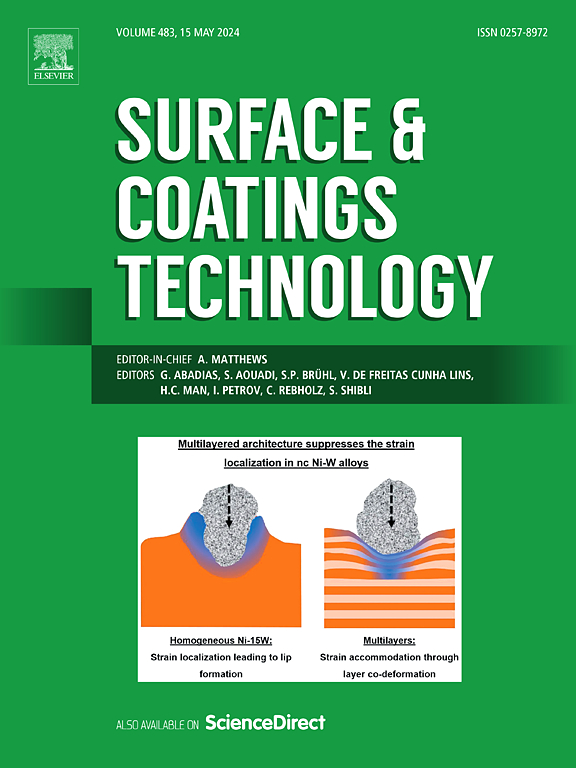ZnO:(B, Ga)/Au electrodes for improved Ohmic contacts on ultrawide-bandgap Ga2O3 films
IF 5.3
2区 材料科学
Q1 MATERIALS SCIENCE, COATINGS & FILMS
引用次数: 0
Abstract
Gallium oxide (Ga2O3) is an ultrawide-bandgap semiconductor material known for its high breakdown field strength, large Baliga's figure of merit, and significant thermal and chemical stability, making it suitable for advanced technological applications. In this paper, Ga2O3 films were prepared using radio-frequency (RF) magnetron sputtering. B and Ga co-doped ZnO (BGZO)/Au composite electrodes were developed to achieve improved Ohmic contact characteristics with Ga2O3 films, comparing these results with those of widely used Ti/Au electrodes. The specific contact resistance of the electrodes was quantitatively measured using the dot circular transmission line model (d-CTLM) method. The results indicate that the presence of BGZO intermediate semiconductor layers (ISL) with appropriate thickness effectively reduces the specific contact resistance between the electrode and the Ga2O3 film, and the minimum specific contact resistance value is 1.049 × 10−2 Ω·cm2. This research provides critical insights into optimizing electrode to enhance the performance and reliability of Ga2O3-based devices.
求助全文
约1分钟内获得全文
求助全文
来源期刊

Surface & Coatings Technology
工程技术-材料科学:膜
CiteScore
10.00
自引率
11.10%
发文量
921
审稿时长
19 days
期刊介绍:
Surface and Coatings Technology is an international archival journal publishing scientific papers on significant developments in surface and interface engineering to modify and improve the surface properties of materials for protection in demanding contact conditions or aggressive environments, or for enhanced functional performance. Contributions range from original scientific articles concerned with fundamental and applied aspects of research or direct applications of metallic, inorganic, organic and composite coatings, to invited reviews of current technology in specific areas. Papers submitted to this journal are expected to be in line with the following aspects in processes, and properties/performance:
A. Processes: Physical and chemical vapour deposition techniques, thermal and plasma spraying, surface modification by directed energy techniques such as ion, electron and laser beams, thermo-chemical treatment, wet chemical and electrochemical processes such as plating, sol-gel coating, anodization, plasma electrolytic oxidation, etc., but excluding painting.
B. Properties/performance: friction performance, wear resistance (e.g., abrasion, erosion, fretting, etc), corrosion and oxidation resistance, thermal protection, diffusion resistance, hydrophilicity/hydrophobicity, and properties relevant to smart materials behaviour and enhanced multifunctional performance for environmental, energy and medical applications, but excluding device aspects.
 求助内容:
求助内容: 应助结果提醒方式:
应助结果提醒方式:


